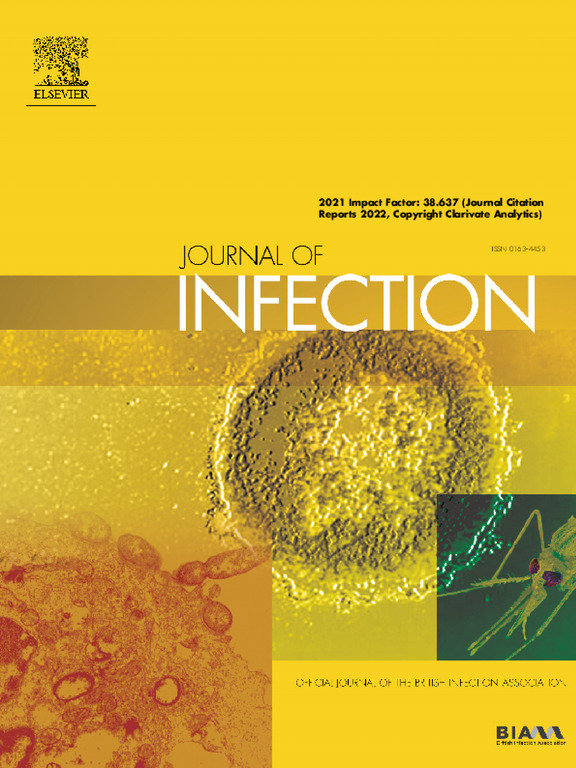Direct-acting antiviral treatment outcomes in people infected with endemic compared to epidemic hepatitis C virus subtypes in England
IF 14.3
1区 医学
Q1 INFECTIOUS DISEASES
引用次数: 0
Abstract
Background
Current evidence suggests reduced efficacy of direct-acting antiviral (DAA) treatment among people with endemic Hepatitis C virus (HCV) subtypes rare to high-income countries. We aimed to determine real-world DAA treatment outcomes of people with endemic HCV subtypes in England.
Methods
Data were collected through a national treatment program. People who had their virus subtyped between 2019–2023, were resident in England and had an outcome recorded for their first DAA treatment episode, were included. Subtypes were divided into epidemic and endemic in England; endemic subtypes were confirmed with whole genome sequencing and resistance associated substitutions (RAS) were determined. Logistic regression was used to determine associations between treatment outcome and exposure variables.
Results
In people with an outcome recorded, 93 with an endemic and 8671 with an epidemic HCV subtype were identified, of whom 49.5% (46/93) and 91.8% (7953/8668) achieved a sustained virological response at 12 weeks post end of DAA treatment (SVR12), respectively. In the multivariable model, people with an endemic subtype had 93% (aOR 0.07 95%CI 0.04–0.12, P=<0.001) reduced odds of achieving SVR12. Treatment with sofosbuvir/velpatasvir or glecaprevir/pibrentasvir was successful for genotypes 1, 2, 4 and 5 (SVR12 100%, n=13) but not 3 (27.3%, n=22) endemic subtypes. Sofosbuvir/velpatasvir/voxilaprevir was successful for GT3 endemic subtypes at retreatment (SVR12 11/12, 91.7%). Treatment failures for genotypes 1, 3 and 4 were likely mediated by naturally occurring baseline NS5A RAS (median n=2).
Discussion
This study provides further evidence that endemic HCV subtypes lead to sub-optimal DAA efficacy, which may impact global HCV elimination.
直接作用抗病毒治疗的人感染地方性丙型肝炎病毒与流行丙型肝炎病毒亚型在英格兰的比较结果。
背景:目前的证据表明,在高收入国家罕见的丙型肝炎病毒(HCV)亚型患者中,直接抗病毒(DAA)治疗的疗效降低。我们的目的是确定英国流行HCV亚型患者的实际DAA治疗结果。方法:通过国家治疗方案收集数据。包括在2019年至2023年期间感染病毒亚型的人,他们居住在英格兰,并在他们的第一次DAA治疗发作中记录了结果。亚型分为流行型和地方性;通过全基因组测序和抗性相关替代(RAS)测定,确定了流行亚型。使用逻辑回归来确定治疗结果与暴露变量之间的关系。结果:在记录结果的患者中,鉴定出93例地方性HCV亚型和8671例流行性HCV亚型,其中49.5%(46/93)和91.8%(7953/8668)分别在DAA治疗(SVR12)结束后12周获得持续病毒学应答。在多变量模型中,具有地方性亚型的人群有93% (aOR 0.07 95%CI 0.04-0.12), P=讨论:本研究进一步证明了地方性亚型HCV导致DAA疗效次优,这可能影响全球HCV消除。
本文章由计算机程序翻译,如有差异,请以英文原文为准。
求助全文
约1分钟内获得全文
求助全文
来源期刊

Journal of Infection
医学-传染病学
CiteScore
45.90
自引率
3.20%
发文量
475
审稿时长
16 days
期刊介绍:
The Journal of Infection publishes original papers on all aspects of infection - clinical, microbiological and epidemiological. The Journal seeks to bring together knowledge from all specialties involved in infection research and clinical practice, and present the best work in the ever-changing field of infection.
Each issue brings you Editorials that describe current or controversial topics of interest, high quality Reviews to keep you in touch with the latest developments in specific fields of interest, an Epidemiology section reporting studies in the hospital and the general community, and a lively correspondence section.
 求助内容:
求助内容: 应助结果提醒方式:
应助结果提醒方式:


